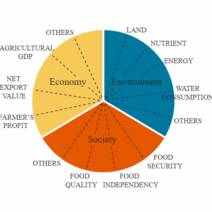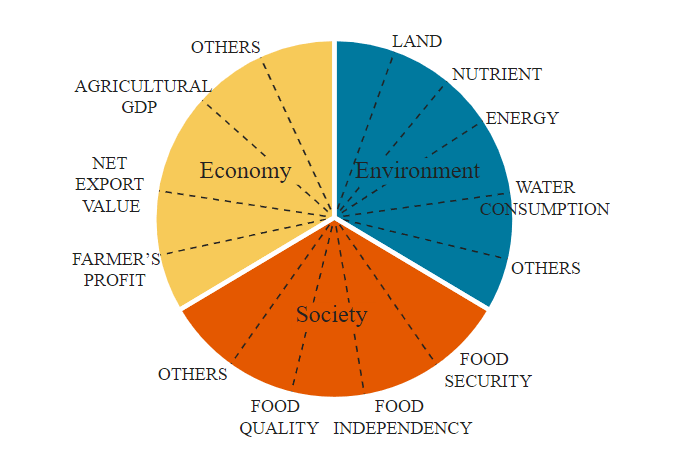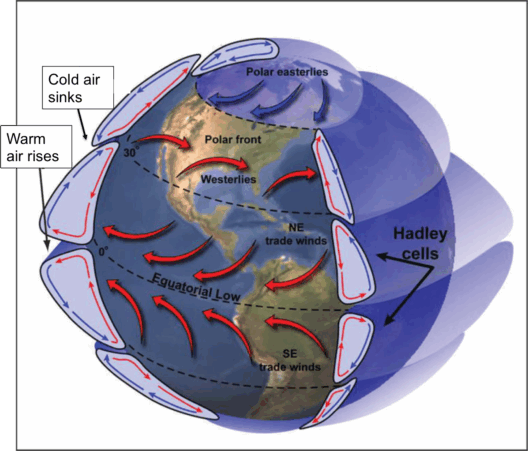As global temperatures rise and climate change becomes an omnipresent threat, the implications for agriculture and food production cannot be overstated. The future of food is intricately linked to environmental shifts, a precarious interplay that demands urgent attention. This discourse will intricately examine how global warming is reshaping agricultural practices, food security, and ultimately, the contents of our plates.
At the core of agriculture are three pivotal factors: climate, soil, and water. The escalation of global warming—characterized by increased carbon emissions and erratic weather patterns—poses significant challenges to these elements. The concept of climatic zones, which historically dictated what crops could flourish in certain regions, is rapidly transforming. As heatwaves, droughts, and heavy rainfall become more common, traditional agricultural systems face disruption, necessitating adaptive strategies.
Imagine standing in a field of maize, once thriving in predictable climates. Now consider the incessant fluctuations in temperature and precipitation patterns. These variations can lead to reduced yields, altering crop viability. For instance, staple crops such as wheat, rice, and maize are sensitive to temperature increases. According to agricultural research, for every degree Celsius that temperatures rise, yields could decrease by approximately 10%. This statistic alone underscores the urgency to reform agricultural methodologies to accommodate a warming planet.
Soil health is another critical facet impacted by climate change. Healthy soil is foundational for nutrient-rich crops; however, rising temperatures can exacerbate soil erosion, degradation, and the loss of organic matter. Increased rainfall intensity, a byproduct of climate change, can lead to more severe runoff, stripping away fertile topsoil. Furthermore, changes in temperature can affect soil microorganisms and their habitats, influencing essential processes such as nutrient cycling. As soil quality declines, so does agricultural productivity. This cascade of challenges not only threatens yields but also raises concerns about the sustainability of food systems.
Water is indispensable in agriculture, yet climate change is rendering water sources increasingly unreliable. Changes in precipitation patterns and the melting of glaciers—critical water reserves—complicate irrigation practices. Regions that once benefited from stable water supplies may find themselves grappling with scarcity. Agricultural irrigation accounts for approximately 70% of global freshwater use, and as climate change exacerbates water shortages, the need for sustainable water management becomes paramount.
Agricultural adaptation strategies are essential to mitigate the effects of climate change. Climate-smart agriculture (CSA) is gaining traction, focusing on techniques that enhance productivity while reducing greenhouse gas emissions and increasing resilience to climate impacts. Strategies such as crop rotation, agroforestry, and the implementation of drought-resistant crop varieties are examples of proactive measures being adopted. Additionally, precision agriculture utilizes technology to monitor environmental conditions, enabling farmers to optimize resource use and minimize waste.
Technological advancements also play a crucial role in shaping the future of food. Genetic engineering, for example, introduces innovations such as genetically modified organisms (GMOs) designed to withstand extreme weather conditions, pests, and diseases. While contentious, GMOs have the potential to increase food security in vulnerable regions. Furthermore, vertical farming and hydroponics represent a paradigm shift in food production, allowing for year-round cultivation in controlled environments, thus lessening the dependence on traditional agricultural land.
The implications of global warming extend beyond the farm gate, profoundly influencing food security and dietary habits. Food insecurity is projected to rise, particularly in developing nations heavily reliant on agriculture. With crop failures anticipated due to climate-induced stressors, vulnerable populations may experience food shortages, malnutrition, and escalating prices. Under these circumstances, food distribution systems must adapt; local food sourcing, urban agriculture, and sustainable practices will be critical in creating resilient food systems.
Moreover, shifting climatic conditions will influence consumer preferences and diets. As certain crops become less viable in specific regions, dietary patterns may need to evolve. For instance, staples may be supplanted by alternative, more resilient sources, such as legumes, tubers, or even insects. This shift may prompt profound changes in culinary traditions and food cultures globally, necessitating an openness to new foods and practices.
In conclusion, the impact of global warming on agriculture is profound and far-reaching. The intertwining of climate, soil, and water constitutes an intricate nexus that farmers must navigate in the quest for food security. For agriculture to flourish amid rising temperatures, a multifaceted approach is essential, incorporating adaptive strategies, technological innovations, and sustainable practices. The future of food hangs in the balance, demanding not only awareness but also proactive measures from all stakeholders in the food system. As the consequences of climate change continue to unfold, the choices made today will irrevocably shape the agricultural landscape of tomorrow, redefining what resides on our plates.






